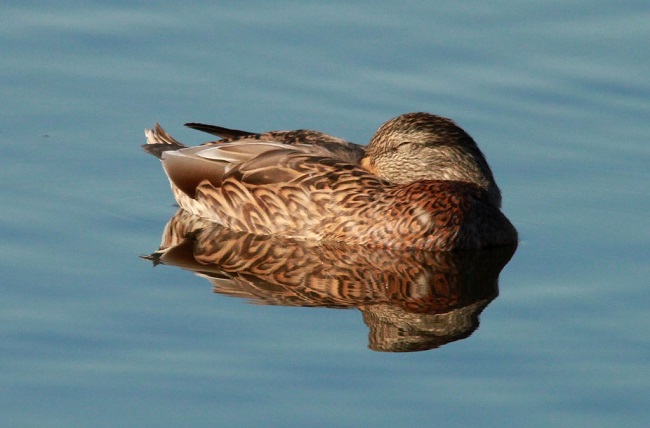Have you ever pondered how ducks sleep? With their aquatic habitats and open environments, sleeping could be a challenging task.
However, ducks have evolved fascinating adaptations to get the rest they need while staying safe from predators. This comprehensive guide aims to shed light on the intriguing and complex sleep patterns of ducks.

Sleeping with One Eye Open
Ducks have a remarkable ability known as unihemispheric slow-wave sleep (USWS). This allows one half of their brain to sleep while the other half stays alert, with one eye open. This unusual sleeping style helps them detect potential threats even when resting.
Read Also:
Group Sleeping Arrangements
To optimize safety, ducks often sleep in groups. Ducks on the outer edges of the group are more likely to practice USWS, keeping an eye out for danger, while those in the middle might fully sleep, with both eyes closed and both sides of the brain at rest.
The Sleeping Posture
Ducks often sleep on land standing on one or both legs. They tuck their bills into their back feathers, maintaining body heat while resting. Some ducks, particularly sea and diving ducks, may also sleep on the water.
Sleep Cycles and Duration
Like many birds, ducks are diurnal, meaning they’re active during the day and sleep at night. However, the exact amount of sleep a duck gets can vary based on factors like season, weather, and safety. On average, a duck might sleep anywhere from 4 to 12 hours a day.
The Role of the Environment
The environment plays a crucial role in how ducks sleep. For example, domestic ducks in a safe, predator-free environment might exhibit more typical, full-brain sleep, while wild ducks in vulnerable environments would rely more heavily on USWS.
Sleep Disturbances in Ducks
Just like humans, ducks can also experience disturbances in their sleep. These can be caused by a variety of factors, such as environmental noise, light pollution, human activity, or the presence of predators. Long-term sleep disturbances can potentially impact a duck’s health and wellbeing.
The Science Behind USWS
Unihemispheric slow-wave sleep is a fascinating adaptation not only found in ducks but also in other birds and marine mammals like dolphins. This sleep state is believed to be an evolutionary response to living in environments with constant potential threats, proving once again how adaptive and resilient nature can be.
Ducks’ Dream World
While it’s impossible to know for sure if ducks dream, scientific studies on birds show that they experience REM (Rapid Eye Movement) sleep, the sleep stage in which dreaming occurs in humans. This suggests that our feathered friends might indeed have dreams of their own.
Impact of Domestication on Duck Sleep
Domestication can influence a duck’s sleep pattern. Domestic ducks, living in a safer environment with consistent food supply, often exhibit more regular sleep patterns compared to their wild counterparts. However, even domestic ducks benefit from having a secure, quiet place for undisturbed rest.
Helping Ducks Get Good Sleep
For those who keep ducks as pets or on farms, it’s essential to create an environment conducive to healthy sleep. This includes providing secure, comfortable sleeping areas, minimizing noise and light disruption, and ensuring a regular routine for feeding and other activities.
Read Also:
Conclusion
Understanding how ducks sleep offers a captivating glimpse into the adaptations creatures develop for survival. Whether it’s sleeping with one eye open or sleeping in communal groups, ducks have turned the seemingly vulnerable state of rest into a fascinating show of evolutionary ingenuity.
























